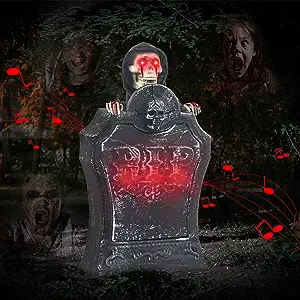Serial killers have long been a source of morbid fascination for both true-crime enthusiasts and psychologists seeking to understand the depths of human depravity. Among the most chilling and notorious serial killers in history stands Andrei Chikatilo, a Soviet-era murderer whose heinous crimes terrorized the Rostov region of Russia from 1978 to 1990. Known as the “Butcher of Rostov” and the “Red Ripper,” Chikatilo’s gruesome acts shocked the world and continue to be studied for their horrific nature and the insights they provide into the dark psyche of a serial killer.
Early life
Andrei Romanovich Chikatilo was born on October 16, 1936, in Yablochnoye, a small village in the Ukraine, then part of the Soviet Union. His upbringing was marked by the tumultuous events of the time, including the impact of World War II. Chikatilo’s early life was filled with hardship and tragedy, and he grew up in a country ravaged by war and famine.
As a child, Chikatilo faced bullying and humiliation from his peers, often teased for his physical appearance and chronic bed-wetting. His adolescence was further marred by his inability to form romantic relationships, which deepened his sense of isolation and inadequacy.
Criminal beginnings
Chikatilo’s descent into criminality began in the late 1950s when he was arrested for theft and later for child molestation. His first prison sentence served as a catalyst for his deviant behavior, as it exposed him to a harsh penal system that only exacerbated his feelings of anger and rejection. His subsequent release marked the beginning of a dark and violent journey.
The killings
Chikatilo’s murderous spree began in the late 1970s when he targeted children and young women in and around the Rostov region. His victims were often lured with promises of money or employment, only to be subjected to horrific acts of violence, sexual assault, and mutilation. Chikatilo’s modus operandi included strangulation, stabbing, and even cannibalism.
He committed his first documented murder on the evening of 22 December, he lured a 9-year-old girl named Yelena Zakotnova to an old, dilapidated hut which he had secretly purchased; he attempted to rape her, but failed to achieve an erection. When the girl struggled, he choked her and stabbed her three times in the abdomen, ejaculating while stabbing the child. In an interview after his 1990 arrest, Chikatilo later recalled that immediately after he stabbed Zakotnova, the girl had “said something very hoarsely”, whereupon he strangled her into unconsciousness before throwing her body into the nearby Grushevka River. Her body was found beneath a nearby bridge two days later.
Following Zakotnova’s murder, Chikatilo was able to achieve sexual arousal and orgasm only through stabbing and slashing women and children to death, and he later claimed that the urge to relive the experience had overwhelmed him.
On 3 September 1981, Chikatilo encountered a 17-year-old boarding school student, Larisa Tkachenko, standing at a bus stop as he exited a public library in Rostov city centre. According to his subsequent confession, Chikatilo lured Tkachenko to a forest near the Don River with the pretext of drinking vodka and “relaxing”. When they reached a secluded area, he threw the girl to the ground before tearing off her clothes and attempting intercourse, as Tkachenko remonstrated against his actions. When Chikatilo failed to achieve an erection, he forced mud inside her mouth to stifle her screams before battering and strangling her to death. As he had no knife, Chikatilo mutilated the body with his teeth and a six-foot long stick; he also tore one nipple from Tkachenko’s body with his teeth before loosely covering her body with leaves, branches, and torn pages of newspaper. Tkachenko’s body was found the following day.
One of the most chilling aspects of Chikatilo’s crimes was his ability to elude law enforcement for years. He moved frequently, changing jobs and adopting a facade of normalcy, which allowed him to avoid suspicion. Additionally, the Soviet authorities were initially reluctant to acknowledge the presence of a serial killer, which hindered the investigation.
The arrest and trial
Chikatilo’s reign of terror finally came to an end in 1990 when he was arrested by police. His arrest was the result of improved investigative techniques and the dedication of law enforcement officers who had tirelessly pursued the case.
During his trial, Chikatilo confessed to 53 murders but was ultimately convicted of 53 counts of murder and sentenced to death. He was executed on February 14, 1994. He was executed by firing squad in Novocherkassk, Russia.
Psychological analysis
Chikatilo’s case has been the subject of extensive psychological analysis. He exhibited several classic traits of a serial killer, including sadism, sexual deviancy, and a compulsion to kill. His inability to form healthy relationships and his deep-seated feelings of inadequacy likely contributed to his violent fantasies and actions.
Some experts have also explored the role of Chikatilo’s childhood experiences, including the trauma of witnessing atrocities during World War II and the abuse he suffered at the hands of his mother, in shaping his murderous tendencies.
Legacy
The legacy of Andrei Chikatilo is one of horror and fascination. His crimes shocked the world and continue to be a subject of study for criminologists, psychologists, and true-crime enthusiasts. Chikatilo’s case underscores the chilling fact that serial killers can lurk in plain sight, often leading seemingly normal lives while harboring the darkest of secrets.
Conclusion
Andrei Chikatilo, the Butcher of Rostov, remains one of the most infamous serial killers in history. His life and crimes serve as a stark reminder of the capacity for evil that can lurk within the human psyche. While his reign of terror has ended, the legacy of his heinous acts continues to haunt the collective memory, serving as a chilling cautionary tale of the depths to which human depravity can sink.



